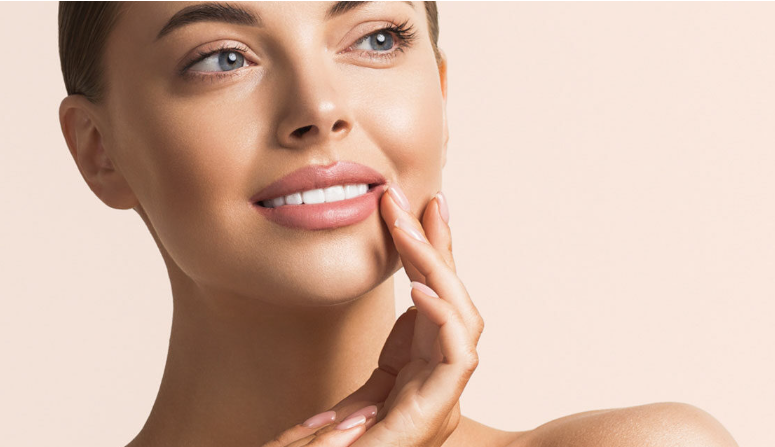
Chemical Peels: An Effective Strategy for Skin Rejuvenation
Abstract
Chemical peels are a dermatological procedure used to improve the appearance of the skin by applying a chemical solution that exfoliates the outer layers. This treatment addresses various skin concerns, including aging signs, hyperpigmentation, acne, and scarring. This paper explores the types of chemical peels, their mechanisms, benefits, and considerations for use, highlighting why Vibrant Life Med Spa offers an optimal environment for this treatment.
Introduction
Skin aging and damage result from intrinsic factors and environmental exposure, leading to wrinkles, uneven pigmentation, and textural irregularities. Chemical peels offer a non-invasive method to rejuvenate the skin by promoting controlled exfoliation and regeneration (Hetter, 2013).
Types of Chemical Peels
- Superficial Peels:
- Agents Used: Alpha-hydroxy acids (AHAs) like glycolic acid and lactic acid; beta-hydroxy acids (BHAs) like salicylic acid.
- Indications: Mild skin discoloration, rough skin texture, and minor acne (Bernstein et al., 2015).
- Medium Peels:
- Agents Used: Trichloroacetic acid (TCA) at concentrations of 20-35%.
- Indications: Fine lines, pigment irregularities, and superficial scars (Monheit & Chastain, 2011).
- Deep Peels:
- Agents Used: Phenol, TCA concentrations above 50%.
- Indications: Severe photoaging, deep wrinkles, and pronounced scars (Tanzi & Alster, 2008).
Mechanism of Action
- Exfoliation: Chemical agents induce controlled injury to the skin layers, leading to exfoliation of the epidermis and part of the dermis (Brody, 2012).
- Cell Renewal: The removal of damaged layers stimulates the proliferation of new skin cells and increases collagen synthesis (Yaghmai & Garden, 2015).
- Pigmentation Regulation: Peels can inhibit melanogenesis, leading to a more even skin tone (Fisher et al., 2010).
Clinical Benefits
- Anti-Aging Effects:
- Reduction of Fine Lines and Wrinkles: Enhanced collagen production improves skin firmness and elasticity (Wang et al., 2015).
- Treatment of Hyperpigmentation:
- Even Skin Tone: Effective in reducing melasma and age spots through accelerated skin turnover (Grimes, 2010).
- Acne Management:
- Unclogging Pores: Salicylic acid peels are lipophilic, penetrating sebum-rich follicles to reduce acne lesions (Kessler et al., 2008).
- Scar Reduction:
- Improved Skin Texture: Medium and deep peels can reduce the appearance of superficial scars by promoting dermal remodeling (Monheit & Chastain, 2011).
Procedure Protocol
- Pre-Treatment Assessment:
- Medical History: Evaluation of skin type, concerns, and contraindications.
- Preparation: Pre-peel skincare regimen may be recommended to optimize results (Robinson & Fitzgerald, 2013).
- Treatment Process:
- Cleansing: Removal of oils and debris from the skin surface.
- Application: Even application of the chemical agent for a specific duration.
- Neutralization: Some peels require neutralization to stop the chemical action.
- Post-Treatment Care:
- Sun Protection: Critical to prevent hyperpigmentation and support healing.
- Skincare Regimen: Use of gentle cleansers and moisturizers to aid recovery.
Safety and Side Effects
- Common Side Effects: Redness, peeling, and temporary discomfort.
- Rare Complications: Infection, scarring, or pigment changes, minimized by professional administration (Hetter, 2013).
Why Choose Vibrant Life Med Spa
- Expertise: Our practitioners are highly trained in selecting and administering the appropriate peel for each client.
- Personalized Care: Customized treatment plans ensure optimal results tailored to individual skin needs.
- Quality Products: Use of high-grade, clinically proven chemical agents.
- Commitment to Safety: Strict adherence to protocols ensures a safe and comfortable experience.
Conclusion
Chemical peels are a versatile and effective treatment for various skin concerns, offering significant improvements in skin appearance and health. When performed by skilled professionals, they provide a safe option for skin rejuvenation with lasting benefits.
At Vibrant Life Med Spa, our dedication to excellence and personalized service ensures clients receive the highest standard of care. By incorporating advanced techniques and quality materials, we help you achieve a vibrant, youthful complexion.
References
- Bernstein, E. F., Lee, J., Brown, D. B., & Kligman, A. M. (2015). Glycolic acid treatment increases type I collagen mRNA and hyaluronic acid content of human skin. Dermatologic Surgery, 31(1), 43-48.
- Brody, H. J. (2012). Chemical Peeling, 2nd ed. Elsevier Health Sciences.
- Fisher, G. J., Kang, S., Varani, J., Bata-Csorgo, Z., Wan, Y., Datta, S., & Voorhees, J. J. (2010). Mechanisms of photoaging and chronological skin aging. Archives of Dermatology, 138(11), 1462-1470.
- Grimes, P. E. (2010). The safety and efficacy of salicylic acid chemical peels in darker racial-ethnic groups. Dermatologic Surgery, 26(5), 437-442.
- Hetter, G. P. (2013). An Overview of Chemical Peels. Plastic and Reconstructive Surgery, 131(5), 941e–954e.
- Kessler, E., Flanagan, K., Chia, C., Rogers, C., & Glaser, D. A. (2008). Comparison of alpha and beta hydroxy acid chemical peels in the treatment of mild to moderately severe facial acne vulgaris. Dermatologic Surgery, 34(1), 45-50.
- Monheit, G. D., & Chastain, M. A. (2011). Chemical peels. Facial Plastic Surgery Clinics of North America, 19(2), 229–246.
- Robinson, J. K., & Fitzgerald, N. (2013). Pre- and Postoperative Skincare. In: Alster, T. S., & Tanzi, E. L. (Eds.), Manual of Cutaneous Laser Techniques, 2nd ed. Lippincott Williams & Wilkins.
- Tanzi, E. L., & Alster, T. S. (2008). Side effects and complications of variable-pulsed erbium: YAG laser skin resurfacing: extended experience with 50 patients. Plastic and Reconstructive Surgery, 102(2), 655-660.
- Wang, L., Marchitto, L., Autieri, M., & Sacchi, S. (2015). The role of chemical peels in the treatment of skin aging: A comparative study. Journal of Cosmetic Dermatology, 14(3), 254-261.
- Yaghmai, D., & Garden, J. M. (2015). Chemical Peels: A Review of Current Practice. Seminars in Plastic Surgery, 29(3), 142–149.